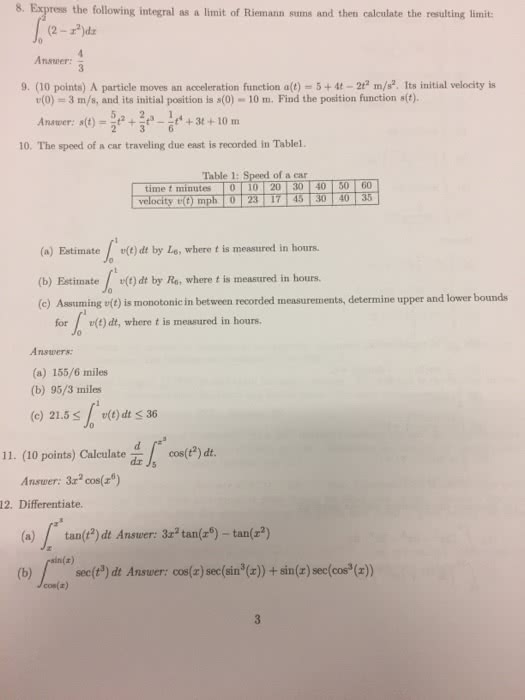MATH 140B Lecture 1: Average Velocities
Document Summary
Distance f(x) t=hr. d=mi t=0: d (0) =15(0) ^2+10(0) +20 = 20 miles t=1: d (1) =15(1) ^2+10(1) +20 = 45 miles t=2: d (2) =15(2) ^2+10(2) +20 = 100 miles t=10: d (10) =15(10) ^2+10(10) +20= 1620 miles. Begin: calculating average velocities between a t1 and t2. V (t1, t2) = d (t2)-d (t1) / t2-t1. V [0, 2] = d/ t = d2-d0 / 2-0 = 100-20/ 2-0 = 80/2= 40 mi/hr. V [1, 2] = d/ t = d2-d1 / 2-1 = 100-45/1 = 55 mi/hr. So: v [2, 2] = d2-d2 / 2-2 = 0/0. Because of the last two statements 3=0=-11 so numbers are broken if you could divide by zero. Since you cannot divide by zero you cannot use average velocity formula for instantaneous velocity. Get successively better approximations by taking t to be sufficiently small.



